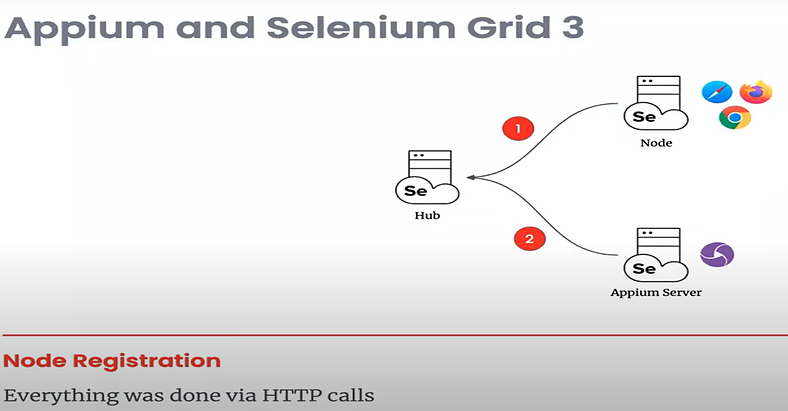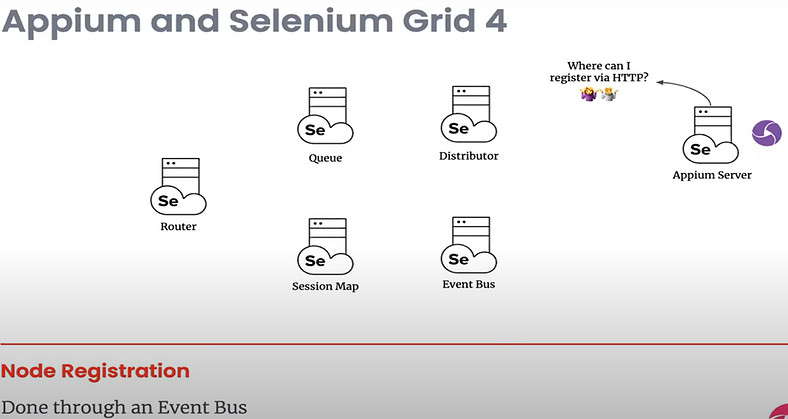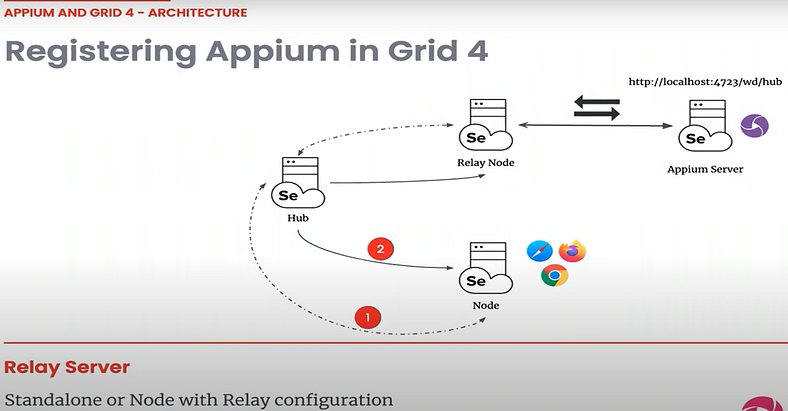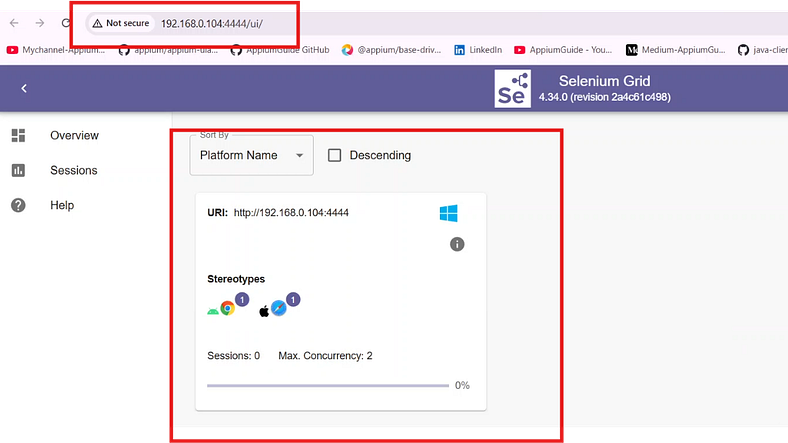[Appium Parallel Testing] Using Grid4 [Part-1] — How To Configure Selenium Grid 4 with Appium
Get a step-by-step walkthrough in the video below!
Introduction
In mobile automation, running parallel tests across multiple devices or emulators is essential. Appium combined with Selenium Grid 4 enables us to scale tests efficiently. While Selenium Grid 3 was previously used with Appium, Selenium Grid 4 introduces a modern architecture and easier node registration mechanisms.
In this article, you’ll learn how to configure Selenium Grid 4 with Appium, including comparisons with Grid 3, setting up the environment, and a full breakdown of the architecture.
Part-1: How To Configure Selenium Grid 4 with Appium
Topic-1: Download Selenium Grid 4
Topic-2: Appium with Selenium Grid 3
Topic-3: Appium with Selenium Grid 4
Topic-4: Appium Grid Architecture
1. Configuring Grid 4 for Appium — Explain Step-by-Step
2. Register Appium with Grid4
3. Verify Grid Console
Topic-5: Demo
Topic 1: Download Selenium Grid 4
- Go to the official Selenium site.
- Download the latest
selenium-server-x.y.z.jarfile (e.g.,selenium-server-4.34.0.jar).
Topic 2: Appium with Selenium Grid 3
Note: Deprecated, but still used in legacy systems
In Selenium Grid 3:
- A hub and nodes architecture was used.
- Appium servers were manually registered using a JSON nodeConfig.

Example command: — Configuring Grid 3 for Appium:
Command Used to Start Hub:
java -jar selenium-server-<version>.jar hub
Example:
java -jar selenium-server-4.33.0.jar hub
Command to Configure Nodes:
appium --port <port_no> --nodeconfig <path\node.json
Example:
appium --port 4725 --nodeconfig node1.json
appium --port 4723 --nodeconfig node1.jsonTopic-3: Appium with Selenium Grid 4
Recommended for modern projects — supports distributed, flexible configuration
Major Improvements in Grid 4:
- Uses TOML configuration files.
- Auto-detects drivers (e.g., ChromeDriver).
- Built-in event bus, distributed mode, Docker support, etc.

Topic-4: Appium Grid Architecture
- The Router handles incoming WebDriver requests.
- The Distributor assigns sessions to available nodes.
- Nodes are where Appium servers are running.

- Configuring Grid 4 for Appium — Explain Step-by-Step
[server]
port = 4444
[node]
detect-drivers = false
[relay]
url = "http://localhost:4723/wd/hub"
status-endpoint = "/status"
#se
configs = [
"1", "{\"browserName\": \"chrome\", \"platformName\": \"android\", \"appium:platformVersion\": \"12\"}",
"1", "{\"browserName\": \"safari\", \"platformName\": \"iOS\", \"appium:platformVersion\": \"12.1\"}"
]Full File Overview:
This file configures a Selenium Grid Node that relays requests to an Appium server running locally on port 4723.
Section Purpose
[server] → Configures the node’s own port (not Appium)
[node] → Prevents auto-detecting local browser drivers
[relay] → Forwards Selenium Grid requests to your Appium server
configs → Defines what kind of sessions this node can run
🔹 [server] Section
[server]
port = 4444
- port = 4444: Sets the port where the Selenium node itself will run (not the Grid hub). This is typically used if this node acts as a standalone or for internal communication. If you’re using this with the Grid Hub (usually on port 4444), it’s often fine.
🔹 [node] Section
[node]
detect-drivers = false
- detect-drivers = false: Tells Selenium not to auto-detect any browser drivers (like ChromeDriver, GeckoDriver).
- This is important when you’re not using traditional browsers directly but instead relaying to Appium, which manages the devices.
🔹 [relay] Section
[relay]
url = “http://localhost:4723/wd/hub"
status-endpoint = “/status”
- url: The Appium server’s endpoint to which requests will be forwarded.
- Here, Appium is running locally on port 4723.
- status-endpoint: Path to check the node’s status (standard for Appium).
🔹 configs Array
configs = [
“1”, “{\”browserName\”: \”chrome\”, \”platformName\”: \”android\”, \”appium:platformVersion\”: \”12\”}”,
“1”, “{\”browserName\”: \”safari\”, \”platformName\”: \”iOS\”, \”appium:platformVersion\”: \”12.1\”}”
]
This defines the capabilities that the Appium node supports.
Each config has:
- “1” → Indicates the max number of concurrent sessions for that capability.
- A JSON string describing the Appium desired capabilities.
So:
- This node can handle 1 session for Android Chrome on version 12
- And 1 session for Android Chrome on version 12.1
These capabilities must match what your emulator or device supports and what your Appium server can handle.
Summary:
Section Purpose
[server] — Configures the node’s own port (not Appium)
[node] — Prevents auto-detecting local browser drivers
[relay] — Forwards Selenium Grid requests to your Appium server
configs — Defines what kind of sessions this node can run
2. Register Appium with Grid4
java -jar selenium-server-4.34.0.jar standalone --config samplenode.tomlExample:

3. Verify Grid Console
Open http://localhost:4444/ui
You should see the Appium node registered with 2 slot.

GitHub Link:
🎬 Explore More! Watch My Latest Videos on YouTube!


No comments:
Post a Comment